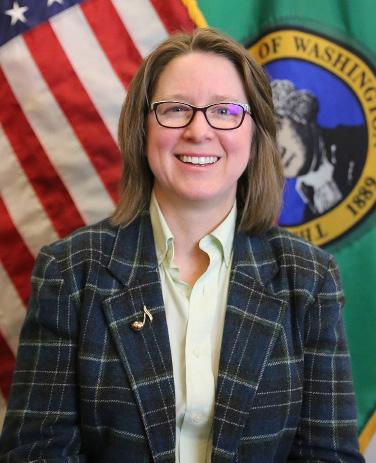
3 minute read
WASHINGTON YOUTH ACADEMY
LOCATION: BREMERTON

Advertisement

Amy Steinhilber Dennis Kerwood WHAT IS THE WASHINGTON YOUTH ACADEMY?

The Washington Youth Academy (WYA) is a life intervention and credit recovery based educational program. Cadets are empowered to reintegrate into their home schools with the skills to graduate with their peers and become responsible citizens. There are eight core components central to the Academy’s mission, and all components must be successfully completed for a cadet to graduate from the Academy. Experiential training and activities tied to the core components help educate and build resiliency to empower youth to become productive members of the community upon graduation. The WYA continues to be known across the nation as a leader in the National Guard Youth Challenge Program for its innovative approaches and effective results. In December 2019, the academy completed its 11th year of operation.
The eight core components are: leadership and followership, life coping skills, responsible citizenship, academic excellence, job skills, health and hygiene, service to community and physical fitness.
The Academy helps cadets build character, resiliency skills, and recover credits so they can go back to high school and earn a diploma or seek an alternative path to finish their high school education. The WYA is a two-phase program that includes a 22-week intensive residential phase and a 52-week post-residential (or mentoring) phase.
Cadets can earn up to 8 credits – about 1.3 years of high school – in just 22 weeks.
Secretary of State Kim Wyman addresses a group of cadets at the Washington Youth Academy during the class 19-1 cycle. (Photo by Steven Friederich)


Maj. Gen. Bret Daugherty, the adjutant general, address the graduates of the Washington Youth Academy and their families during the drive-in graduation ceremony on Dec. 19, 2020. (Photo by Steven Friederich)

2020 CLASS INFORMATION
Even with long standing influenza and pandemic mitigation protocols, the program was not empowered to keep up with the ever-changing developments and discoveries that emerged at the beginning of the COVID-19 pandemic. This, and the impacts of COVID-19 numbers on local health care providers, inhibited the staff in providing the necessary quality of care for Cadets. Thus, the WYA suspended its residential mission on March 21st, sending 154 Cadets back to their hometowns across the state. Cadets left unclear about how they would finish, but with the message form their Cadre, faculty and staff to, “Stay in touch.” The team immediately got to work retooling every aspect of Academy life. Reacting quickly, Cadre and staff adapted core component training and activities into modules acceptable for online engagements with Cadets. Faculty aligned academic curriculum for online delivery and completion; they sought ways to adjust classroom instruction to meet the individual needs of 154 youth spread all across the entire state, each with varying degrees of access to technology or internet. The WMD CIO fueled the response and established new software and technology to support a “virtual” Academy that would help 2020 Cadets finish what they started. Classroom laptops were transformed into individual Cadet laptops for those who needed them. Special Wi-Fi units were ordered to facilitate connectivity for youth in need. In a mere two weeks, Cadets received instructions and an invitation to return to the mission. The WYA staff mobilized to deliver the necessary equipment to the doors of Cadets. A new purpose was established for the WYA team of professionals – help these Cadets meet the requirements to complete the program. The unique nature of the Academy’s mission requires the full 147 days in residence in order to foster the transformative relationships that most address the needs of Cadets. Anything less than this face-to-face time with WYA professionals prevents the full depth of the youth development the WYA inspires. Fortunately, the relationships forged during the 63 days of residence were enough to leverage engagement and participation for most of the Cadets. Assigned in small groups of three or four, Cadets were each assigned a staff member “coach” and began learning how to navigate the virtual campus software. Staff coaches contacted their groups daily to establish expectations, provide encouragement, and insist on accountability.





